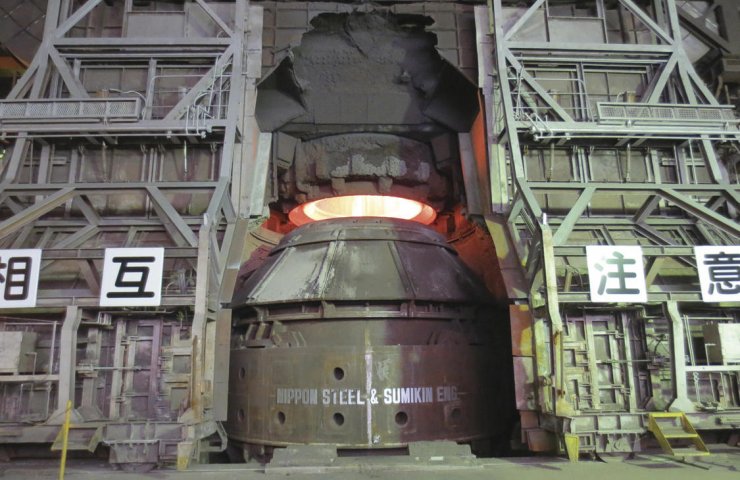Japan's largest steel mill Nippon Steel has begun development of a giant electric arc furnace (EAF) and plans to expand the use of hydrogen in steelmaking in the coming years as part of decarbonization efforts to achieve zero CO 2 emissions by 2050 .
Nippon Steel has unveiled an action plan to decarburize steelmaking operations through various technological innovations, including carbon capture, utilization and storage. By 2030, the company plans to reduce its carbon dioxide emissions (CO 2 ) by 30% compared to 2013 levels.
Nippon Steel is considering combining hydrogen scrap and direct reduced iron as feedstock for a giant EAF that will run on green electricity to reduce 2 CO emissions.
To date, the largest electric arc furnace operates at Tokyo Steel in Tahara, Japan, with a production capacity of 2.5 million tonnes per year, compared to an EAF with an average capacity of 700,000 tonnes per year.
The steel industry is the largest emitter of CO 2 , accounting for about 14% of Japan's total emissions. Most of the CO 2 emissions are from blast furnace steelmaking. Nippon Steel is consolidating its steel production in the domestic market, aiming to reduce its production capacity to 40 million tons per year by April 2025 by 10 blast furnaces.
Nippon Steel also plans to accelerate the development of a direct hydrogen reduction steelmaking process for commercialization by 2050. Major global steelmakers, including ArcelorMittal, are also working to develop the hydrogen process, but high costs undermine such efforts, at least in the near future.
Nippon Steel and rival steel mills JFE Steel and Kobe Steel have partnered since 2008 to develop technology to reduce CO 2 emissions by reducing hydrogen content in blast furnaces. They aim to commercialize the technology by 2030, while working to further accelerate the rate of hydrogen reduction in blast furnaces through 2050.
Japan's steel industry has asked the government for financial assistance and support for decarbonization efforts. The Japanese government previously predicted that by 2050, the country's need for hydrogen could reach 20 million tons per year, including 7 million tons per year will be used for steel production.




